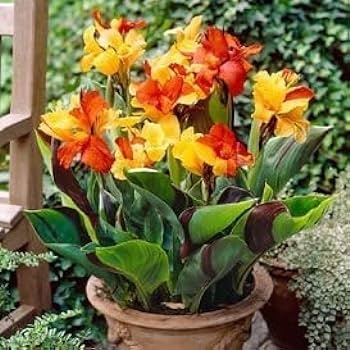Plantparadise
Canna lilies Bulb set of 5|Canna Lily Collections Online|Tropical Garden Bulbs for Sale
Canna lilies Bulb set of 5|Canna Lily Collections Online|Tropical Garden Bulbs for Sale
Regular price
Rs. 300.00
Regular price
Rs. 450.00
Sale price
Rs. 300.00
Unit price
per
Couldn't load pickup availability
Canna lilies (Canna spp.) are known for their bold and tropical-looking foliage, as well as their vibrant and showy flowers. However, it's important to note that Cannas are typically grown from rhizomes, not bulbs. Here's a description of Canna lily rhizomes and their characteristics:
- Rhizome Shape and Size: The Canna lily rhizome is a swollen, fleshy underground stem that stores nutrients for the plant. It is typically thick and can vary in size depending on the age and variety of the plant.
- Color: Canna rhizomes are often a light tan to dark brown color. The outer layer may have a papery covering that can be easily removed.
- Growth Points: On the rhizome, you'll find nodes or "eyes" from which new shoots and roots emerge. These are the points from which the plant will grow.
- Buds and Shoots: As the rhizome begins to sprout, buds develop into shoots that eventually emerge from the soil. The shoots will grow into the tall, sturdy stems of the Canna plant.
- Foliage: Canna lilies are prized for their large, paddle-shaped leaves that can be green, burgundy, or variegated, depending on the variety.
- Flower Characteristics: Canna lily flowers are large and resemble orchids. They come in a variety of colors, including shades of red, orange, yellow, and pink. Some cultivars have bi-colored or speckled flowers.
- Blooming Season: Cannas typically bloom in late spring to early fall, producing colorful and showy flower spikes that add a tropical touch to gardens.
- Height: Depending on the variety, Canna lilies can range in height from a few feet to over six feet, making them a striking focal point in gardens.
- Cultural Significance: Cannas are popular ornamental plants in gardens and landscapes. They are known for their easy cultivation, vibrant colors, and the tropical feel they bring to outdoor spaces.
Materials
Materials
Shipping & Returns
Shipping & Returns
Dimensions
Dimensions
Care Instructions
Care Instructions


